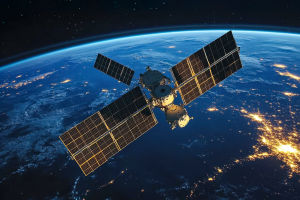The question of how the universe began has fascinated humanity for centuries.
From ancient myths to modern science, countless ideas have tried to explain the origin of everything—the vast cosmos, galaxies, stars, and life itself.
Today, the most widely accepted scientific explanation is the Big Explosion theory. It reveals a dramatic beginning about 13.8 billion years ago, when the entire universe emerged from an extremely hot, dense state and has been expanding ever since. Let's embark on a journey to understand this remarkable theory, the evidence supporting it, and what it tells us about the nature of space, time, and matter.
What Is the Big Explosion Theory?
The Big Explosion theory proposes that the universe started as a singularity—a point of infinite density and temperature where all matter, energy, space, and time were concentrated. Approximately 13.8 billion years ago, this singularity rapidly expanded in an event called the Big Explosion.
Far from being an explosion in space, it was an expansion of space itself. This expansion continues today, causing galaxies to move away from each other and the universe to grow larger. This theory provides the framework to understand the origin of not only matter but also the very fabric of space-time and the physical laws that govern the cosmos.
How Did the Universe Evolve After the Big Explosion?
Immediately after the Big Explosion, the universe was a hot, dense plasma of fundamental particles—quarks, electrons, photons—interacting at extreme energies. As it expanded, it cooled, enabling quarks to combine into protons and neutrons, the building blocks of atomic nuclei. Within the first few minutes, nuclear reactions forged light elements like hydrogen, helium, and trace lithium in a period known as Big Explosion nucleosynthesis.
Over millions of years, as the universe further cooled, these primordial atoms formed clouds of gas that eventually collapsed under gravity to create the first stars and galaxies. The life cycles of stars produced heavier elements, spreading them across space through supernovae explosions. This cosmic evolution set the stage for the creation of planets, solar systems, and ultimately life. The expansion and cooling of the universe traces a remarkable timeline documented by astrophysical observations.
Key Evidence Supporting the Big Explosion
Several pillars underpin the scientific consensus for the Big Explosion:
• Cosmic Microwave Background (CMB) Radiation: Discovered in 1965, this faint background radiation is the thermal remnant of the early universe, providing a snapshot of the cosmos about 380,000 years after the Big Explosion. Its uniformity and spectrum match Big Explosion predictions with remarkable precision.
• Redshift of Distant Galaxies: Observations show that the light from galaxies is shifted toward the red end of the spectrum, indicating they are moving away from us. This discovery supports the ongoing expansion of the universe, consistent with the Big Explosion model.
• Abundance of Light Elements: The observed ratios of hydrogen, helium, and lithium in the universe align closely with values predicted by Big Explosion nucleosynthesis calculations.
• Large-Scale Structure: The distribution of galaxies and cosmic filaments reflects initial density fluctuations amplified by gravity, as anticipated by the theory.
What Challenges and Questions Remain?
While the Big Explosion explains much, certain aspects remain areas of active research:
• The singularity itself defies current physics, as known laws break down under infinite density and temperature. A theory of quantum gravity is needed to describe this state.
• The nature of dark matter and dark energy, which dominate the universe's mass-energy content, remains elusive and critically influences cosmic evolution.
• The theory's inflationary period, a brief phase of extremely rapid expansion shortly after the Big Explosion, is supported by observations but its exact cause and mechanics are still debated.
These open questions inspire ongoing explorations across cosmology, particle physics, and astrophysics.
How Does the Big Explosion Theory Affect Our View of the Universe?
The Big Explosion profoundly reshapes our understanding by situating Earth and humanity in an evolving cosmos that began in a single moment. It connects the smallest particles to the largest cosmic structures, unifies space and time, and highlights the dynamic nature of reality. Beyond pure science, this understanding encourages humility and wonder at our place in a vast, expanding universe.
Your Thoughts on the Universe's Grand Beginning
Discovering how the universe began invites reflection: What intrigues you most about the Big Explosion? How do you think humanity's evolving knowledge of the cosmos will influence future philosophy, technology, or space exploration? Every question fuels curiosity and progress in our quest to comprehend existence on the grandest scale.
The Big Explosion theory is a testament to human ingenuity, bridging observation, mathematics, and imagination to reveal the origins of all that we know—and the mysteries that await discovery.

